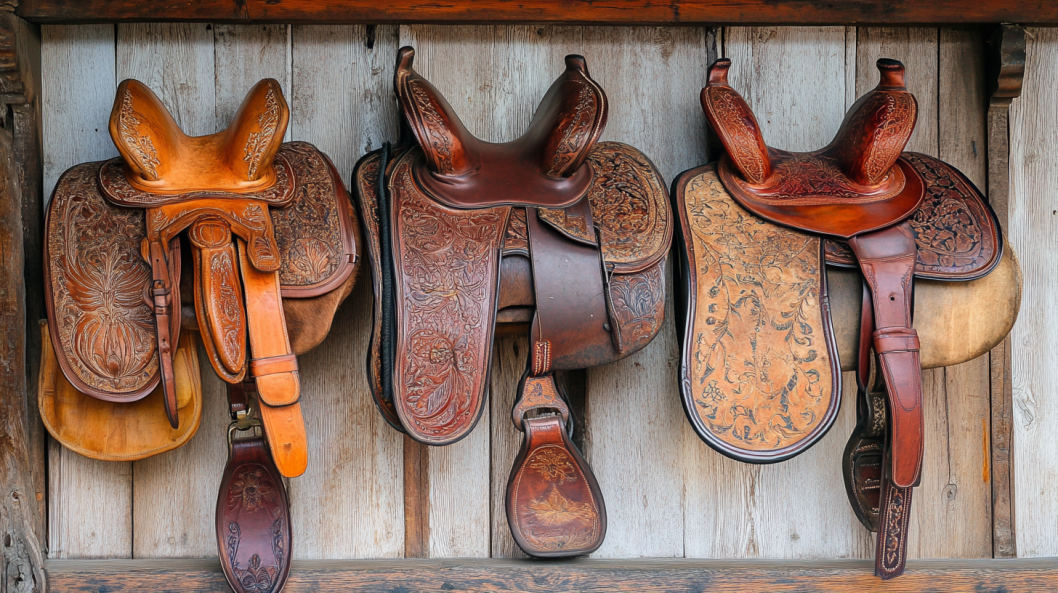Horse saddles are more than just functional equipment; they are a testament to centuries of innovation and refinement. I’ve come to appreciate how these seemingly simple structures have revolutionized our interaction with these majestic animals. The development of the horse saddle is a testament to human ingenuity and a profound understanding of equine biomechanics. It’s fascinating to see how this evolution reflects changes in technology and a deeper appreciation for the comfort and welfare of both horse and rider.
Introduction
Historically, horse saddles have been crucial in developing transportation, agriculture, and warfare. From the simple designs of ancient times to the sophisticated models today, saddles have evolved significantly. This post explores the history and transformation of horse saddles, highlighting key innovations and their impact on human civilization.
Ancient Beginnings
The history of the horse saddle dates back over 3,000 years. The earliest known saddles appeared in the Central Asian steppes, crafted from simple leather and wood. These early saddles, known as “pads,” provided basic cushioning and some protection for both horse and rider. They lacked the structure and stability of modern saddles but laid the groundwork for future developments.
The Introduction of the Saddle Tree
The next significant leap in saddle design came with the introduction of the saddle tree. This innovation traced to around the 4th century BCE, was a rigid framework made from wood or metal that provided support and stability. The saddle tree allowed for better distribution of the rider’s weight and improved the horse’s comfort. It also enabled riders to maintain better control and balance, making it a crucial advancement in saddle design.
Medieval and Renaissance Saddles
During the medieval period, saddles continued to evolve, particularly with the rise of cavalry and mounted combat. Adding high pommels (front) and cantles (back) helped secure riders during battle, enhancing their stability. This period also saw the development of the “war saddle,” heavily padded and often reinforced with metal plates to protect in combat.
The Renaissance era brought further refinements to saddle design, including more elaborate decorative elements and increased emphasis on comfort and aesthetics. Saddles became more specialized, with variations tailored for different purposes, such as hunting, dressage, and leisure riding.
The 19th Century and Industrial Revolution
The 19th century marked a turning point in saddle design, thanks to the Industrial Revolution. Advances in materials and manufacturing techniques led to the production of more durable and standardized saddles. The introduction of the “English saddle,” with its distinct design features such as a deep seat and shorter flaps, became popular among riders in England and beyond.
The Western saddle, developed in the American West, also emerged during this period. Designed for cattle ranching and long hours of riding, the Western saddle featured a sturdy horn and a wide, comfortable seat, making it well-suited for the demands of ranch work.
20th Century Innovations
The 20th century saw a flurry of saddle design innovation, driven by materials advances and a deeper understanding of equine biomechanics. Synthetic materials, such as neoprene and synthetic leathers, began to replace traditional leather, offering greater durability and ease of maintenance.
The rise of competitive equestrian sports, such as show jumping and dressage, led to the development of specialized saddles tailored to the specific needs of each discipline. Designers focused on creating saddles that offered improved fit, comfort, and performance for both horse and rider.
Modern Saddles and Future Directions
Today’s saddles are a blend of traditional craftsmanship and cutting-edge technology. Modern saddles often incorporate ergonomic designs, adjustable components, and advanced materials to enhance comfort and performance. The focus is not only on rider comfort but also optimizing the horse’s movement and preventing injury.
Customization is a significant trend in modern saddle design, with options for bespoke saddles that cater to individual horse and rider needs. Innovations such as 3D scanning and pressure-mapping technology are helping to create saddles that fit perfectly and distribute pressure evenly, contributing to the horse’s overall well-being.
The evolution of horse saddles reflects a rich history of technological advancement and a deepening understanding of the needs of both horse and rider. From the simple pads of ancient times to the sophisticated designs of today, saddles have continually adapted to meet the demands of various riding disciplines and preferences. In my view, the most exciting development in recent years is the emphasis on custom-fit and ergonomic design. Saddles that adapt to the individual needs of both horse and rider are transforming how we ride and compete. These advancements ensure that horses are not just participating in their activities but thriving.





